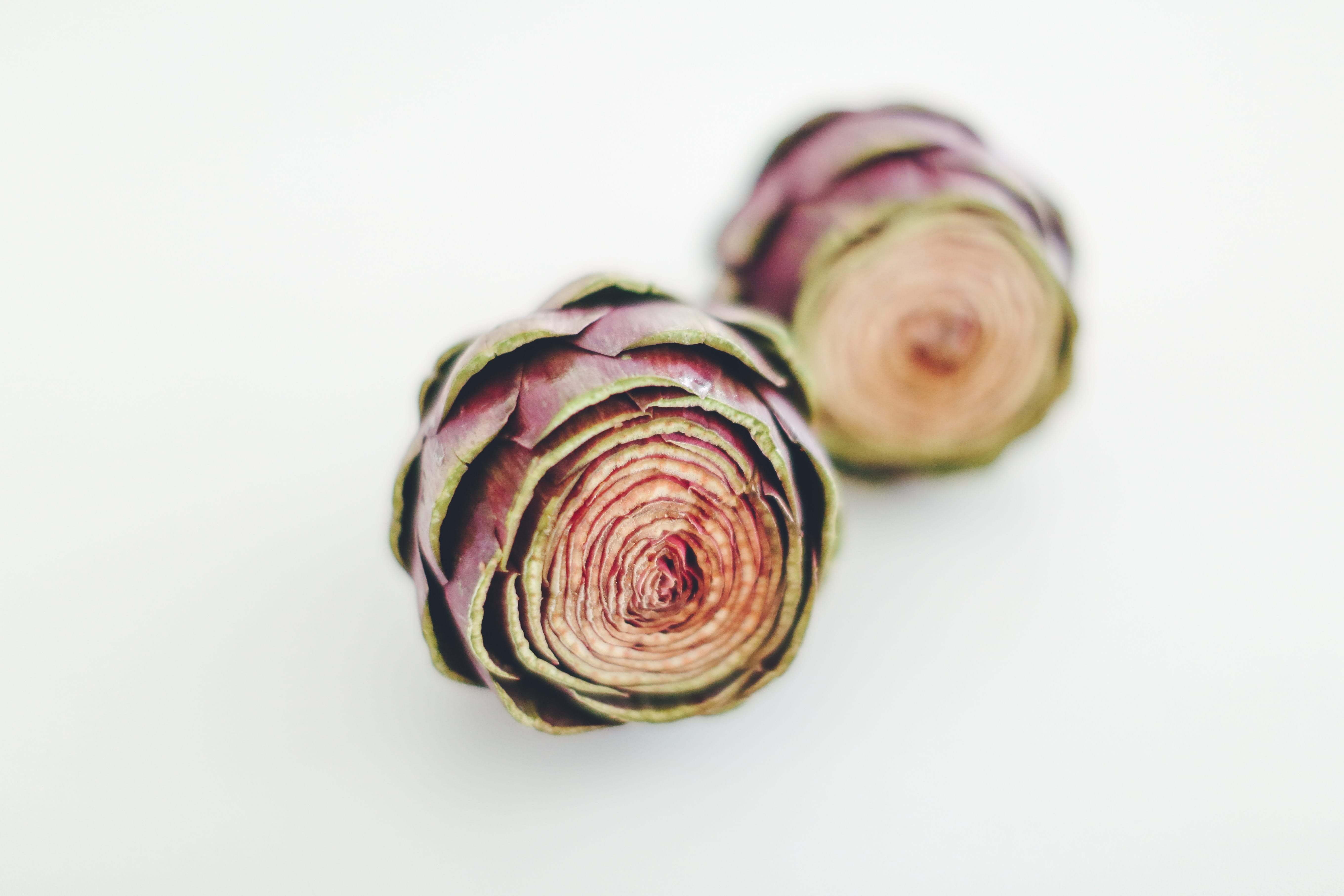
Do you ever wonder “what the heck am I supposed to do with that?” when you spot an artichoke in the produce section? You’re not alone. Artichokes can be intimidating for some and downright foreign to others. Though they may not be the easiest veggie to cook or consume, their high nutritional content makes them well worth eating on a regular basis.
Artichokes are native to the Mediterranean, and have a pretty wild history. Today, Italy, France, Spain and California are the largest producers, and artichokes are used in far more recipes than just spinach dip. Stuffed, baked, or grilled, there are many ways to devour the abundant benefits of these delicious veggies. Before we get into the good stuff, let’s go back a few millennia to learn the mythical story of the artichoke.
The Ancient Greeks and Artichokes
Artichokes are a member of the thistle family, and they’ve been considered a delicacy since the ancient days of Greece and Rome. According to Greek mythology, the artichoke owes its existence to Zeus, the king of the Greek Gods. On a trip to visit his brother, Zeus fell in love with a lovely lady named Cynara.
He quickly seduced Cynara (seduction being one of Zeus’s many talents), made her a goddess, and whisked her back to Mount Olympus. Cynara missed her family, and so she snuck back home often to visit them. As a punishment for deceiving him, Zeus tossed Cynara from Mount Olympus and transformed her into the prickly plant we have come to know as the artichoke. The modern scientific name for artichoke—Cynara cardunculus—derives from this unlucky gal. (What a background!)
The Health Benefits of Artichokes
You may be able to refute the facts of this origin story, but you can’t deny the many health benefits of the artichoke. This veggie contains folate, dietary fiber, antioxidants, vitamins C and K and helps aid in digestion. We dive deep below.
Excellent source of fiber. Amp up your fiber intake with the artichoke. A half-cup of plain, cooked artichoke heart delivers just over 7 grams of fiber, which is just over 28 percent of the recommended daily value. Fiber, in addition to keeping you regular, helps maintain blood sugar and blood pressure levels*.
Full of antioxidants: Move over acai, artichokes are the new go-to for antioxidants. Antioxidants help protect our bodies against free radicals, which can build up in the body and potentially harm healthy cells, proteins, and DNA*. While our bodies produce some antioxidants on their own, it’s a good idea to amp up this intake. Enter: the artichoke!
Rich in Vitamin C. Artichokes provide 25 percent of the recommended daily requirement of Vitamin C, providing antioxidant action to protect cells from damage*. Vitamin C also helps in collagen formation and wound healing*, and protects the body by helping it absorb iron.
Registered Dietician, Swisse Consultant, and Certified Diabetes educator Erin Palinski-Wade says “One of the best ways to beat bloat (in addition to scaling down on the celebratory foods) is to add artichoke to your diet. This vegetable helps the liver to produce bile*, which the body uses to break up dietary fat during digestion. By improving the liver’s ability to produce bile, artichoke may help reduce digestive discomfort, gas and bloating*.”
How should you incorporate artichoke into your diet?
“An artichoke can be added into salads, pastas, and eaten as a delicious snack all on its own,” says Erin. “You can also be sure to get your daily dose of artichoke by adding Swisse’s Ultiboost Liver Detox to your morning routine. The combination of milk thistle, turmeric, and artichoke provide a powerful combination to support liver health and function*.”
Whichever way you choose to add artichoke to your diet, your body will be thanking you for it.
*These statements have not been evaluated by the Food and Drug Administration. This product is not intended to diagnose, treat, cure, or prevent any disease.
What are your favorite ways to consume this diverse and nutrient-rich veggie?
In partnership with Swisse Wellness
More than a multivitamin, the Swisse Ultivite contains vitamins, minerals, plus unique herbs and phytonutrients to support optimal health. Backed by science and rooted in Australian heritage, these premium and comprehensive formulas assist in energy production and provide support for a stressful life. To feel your best, make Swisse a regular part of your daily wellness routine.